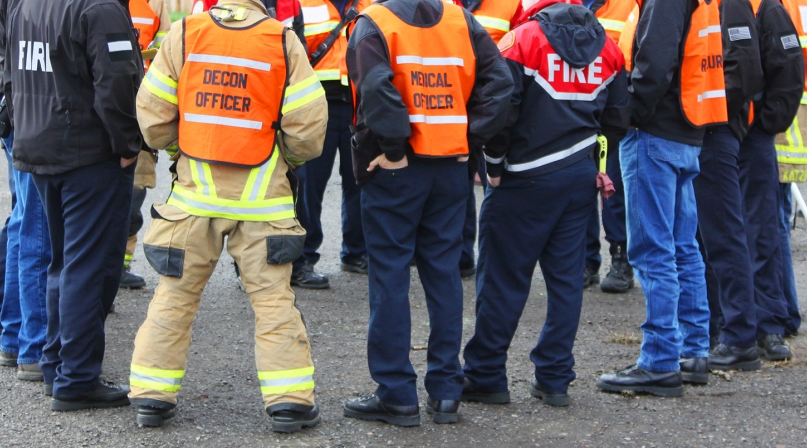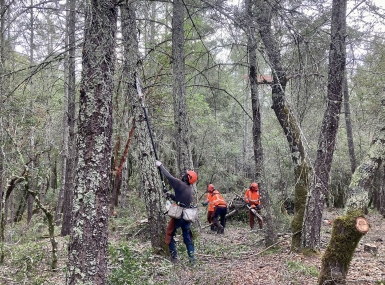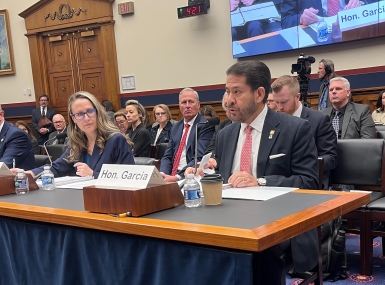Nailing down your emergency management program
Author
Upcoming Events
Related News

Key Takeaways
A natural disaster may be the very worst thing that happens to a county and to its elected officials. A community or portions of it are ruined and everyone looks to the elected and appointed leadership to make things right, and make things right, right now.
No matter what has happened in the community before the disaster, the disaster resets the clock and at the very center of the storm are the elected officials. Few elected officials will make it through a disaster response and the following recovery unscathed.
Every citizen wants a problem fixed now, and fixed first, with government support.
Often, perhaps in most cases, there is little or no training for elected officials on their expected roles following a disaster. Disasters come with an entirely different set of rules, and the time demands are relentless and unforgiving whether officials are prepared or not.
Because so many other issues occupy the everyday lives of elected officials, disaster preparedness, like saving for retirement, often gets short shrift. However, there are some questions that a savvy official can ask of their senior elected/appointed officials, the county administrator, the sheriff, the fire chief, the finance director and others. These questions — and the corresponding answers — can help educate county commissioners on the true status of how prepared the county is for disaster response and the often drawn-out recovery, which follows every disaster.
The secret to success in determining the true state of preparedness is to ask the right questions. If the board of county commissioners asks a senior public safety official if the county is prepared, the answer may easily be a dismissive “Yes, we’re good to go.” The alternative answer is “No, we need more funding to get ready.”
Neither answer tells much about the real capabilities of the organization to respond to and recover from a disaster.
The following is a list of questions that elected officials can put to their senior leadership to really establish response and recovery potential.
A word of caution here. With 30 years of experience in emergency management, and 20 years of teaching disaster cost recovery, I find many local government agencies are not only under-prepared, their staffs do not even know how much they don’t know.
Perhaps the best way to pose these questions would be to have a study session with the elected officials and the senior appointed officials. Any “deer in the headlights” look, which may follow a question, may be more telling than the spoken answers provided by staff.
One other note. Disaster response, while primarily the purview of fire, law, EMS and public works, also involves many other county departments. The larger and more devastating the disaster, the more departments that will be involved, particularly in the recovery phase of the disaster. The recovery period especially goes far beyond the law and fire services of any community.
These 20 questions are extracted from a much longer list, but when asked, they should give some answers as to the state of preparedness of your county. Many of these questions will just skim the surface, but they are a good way to start analyzing your preparedness.
Questions for disaster preparedness assessment of the county
1. Who handles the day-to-day duties associated with disaster preparedness and what percentage of their time is actually devoted to disaster preparedness? Typically, emergency management (EM) is assigned to law enforcement or the fire service, although some counties may have it assigned to the chief administrator’s office. If the EM function is located in the sheriff’s office, the fire department may not fully support the EM function and the reverse is true if the EM function is in the fire service. Turf matters. If located in the CAO’s office, this isn’t as much of a problem — and other non-public safety departments may be more supportive of the EM program. Often, particularly in smaller counties, an employee may have a 25 percent or 50 percent time allocation for the EM program. In fact, the actual amount of time they spend on EM may be much less.
2. Does the county have a strategic plan for disaster preparedness? If so, where is the county in regard to achieving the goals of the strategic plan? When was the strategic plan last revised? Don’t be surprised at a “no” answer to this question, as very few counties have such a plan. However, EM is like every other important function of a county and should have a long-term strategic plan. It will pay huge benefits when a disaster strikes.
3. Does the county have an Emergency Operations Plan (EOP)? When was it last revised? There should absolutely be an EOP, and it should be updated at least every three years. In many states, it may be a legal requirement to have a plan.
Does the county’s Emergency Operations Plan contain:
- Disaster communications (both with the public and other government agencies.)
- Access and Functional Needs
- Animal Rescue (Animal Control)
- Damage Assessment (Building and Safety; Roads and Bridges; Parks and Recreation; Finance)
- Debris Management, Debris Monitoring (Public Works/Environmental)
- Disaster Cost Recovery (Finance and others)
- Continuity of Operations (All departments)
- Continuity of Government (Legal) (Where is the List of Succession?)
4. Is the Emergency Operations Plan compliant with NFPA Standard 1600? NFPA Standard 1600 or EMAP (the Emergency Management Accreditation Program) are objective national standards for measuring emergency management plans and preparedness.
5. Does the county have a plan for disaster cost recovery? If so, when was it last revised? Don’t be surprised at a “No” answer to this question, as very few counties have such a plan. However, disaster cost recovery is like every other important function of a county and should have a working plan. It will pay huge benefits when a disaster strikes
6. Is the county part of a mutual aid agreement with neighboring jurisdictions? When was the mutual aid agreement last used? When was the agreement last revised? Mutual Aid is important to all jurisdictions, and the smaller the jurisdiction, the more important it is. There can be problems with getting repaid for mutual aid if the plan hasn’t been recently used and has not been regularly updated.
7. When was the last emergency preparedness drill held that included activation of the Emergency Operations Center (EOC)? Compared to the day-to-day problems that counties have to deal with, holding an EOC exercise is easy to push off. The purpose of such exercises is to find weaknesses and shortfalls in plans BEFORE a disaster occurs. Regular EOC exercises, at least annually, should be required.
8. When was the last time employees, other than police officers or firefighters, had emergency preparedness training? As with question number 7, this kind of training is easily delayed or not done at all. One of the purposes of such training is to find the weaknesses of the plan and to build the confidence of staff to cope with an actual disaster. Agencies that frequently train and exercise usually do much better in real disasters than those that don’t train and exercise.
9. Other than for police and fire, what were the last three emergency preparedness classes held for employees, when were they held and how many employees attended each class? Law and fire get relatively frequent training as compared with all other government employees. However, once the disaster crisis has passed, these other, often untrained, employees will be responsible for getting the recovery going. They need training too.
10. Exclusive of the police and/or fire department budgets, how much do we have budgeted specifically for disaster preparedness activities? This can be compared to paying for insurance. You don’t want to have it, but you also can’t afford to be without it when a disaster strikes.
11. Is this county accredited by EMAP (Emergency Management Accreditation Process)? (See the last bullet of question #4.) The county should use either EMAP or NFPA Standard 1600 to ensure its EM program is comprehensive and healthy.
12. Does the county have a Disaster Mitigation Plan in compliance with the Disaster Mitigation Act of 2000 (DMA2K)? When is the DMA2K Plan next due for revision? While this sounds like an emergency management issue, it has a lot to do with county planning and land use policy, as well as Public Works and Roads and Bridges. Following a disaster, counties with a current and approved DMA2K plan may be able to get additional funding for mitigation projects from FEMA.
13. Does the county have a volunteer CERT (Community Emergency Response Team), ham radio and/or animal rescue groups? If so, what are the numbers of people trained and the number of people currently active in those programs? When was the last CERT (and other) training program held and how many citizens participated? Many of the better EM programs across the country incorporate volunteer programs. There is an added financial benefit when a disaster does occur, in so far as properly documented volunteer disaster response efforts can be claimed against the county’s response and recovery costs.
14. Are all county employees aware that they are Disaster Service Workers under State law, and specifically, where in our hiring process is this addressed? In many states, all government employees are designated as Disaster Service Workers. All county employees should be aware of this responsibility and be prepared to respond as per the county’s plan.
15. Does the county have a Disaster Purchasing Policy and other necessary policies to maximize our ability to receive Federal disaster assistance? When the county receives FEMA grants to pay for response and recovery costs, all work and expenses MUST comply with Title 2 of the Code of Federal Regulations, Part 200, and the county’s own purchasing policies. Failure to do so is the single greatest risk to having FEMA or the Department of Homeland Security’s auditors take back ALL of the federal grant monies.
16. Where are the names and phone numbers of the emergency preparedness officials with our local school district(s), local hospital(s), and other significant local partner agencies and companies, including local utilities? When was the list last updated? The emergency contact lists for both county employees and outside agencies’ employees get out of date rapidly and a consistent effort must be made to keep these lists up to date.
17. What should we be doing to be better prepared for disaster response and recovery? The county’s own employees may have some very good ideas about how to make the county better prepared for a disaster, but administrative channels may block the free flow of information. The employees need to be a part of disaster preparedness and surveyed for suggestions.
18. Overall on a scale of 1 to 10, how well prepared for disasters is the county? This open-ended question may spur a greater awareness if asked of all employees, not just senior managers.
19. Has the county ever had an audit by an independent outside expert to evaluate the state of preparedness and recovery capabilities? Or does the Council exclusively rely on the self-assessments of staff regarding preparedness? Employees, especially senior managers may have personal agendas that will color their responses and prevent a realistic assessment of the county’s actual level of disaster preparedness for both response and recovery. Recovery capabilities are often more difficult to assess if the county has not had a disaster for a long time.
20. Have any of the elected or senior officials ever attended an off-site disaster-related training program at the Federal Emergency Management Institute (often free), the University of Texas Extension or other nationally recognized emergency management training institute? The federal government has many low cost or no cost training programs available for elected and appointed officials as well as rank and file employees. Also, request that your state counties’ association feature emergency preparedness sessions at their meetings and conferences.
Once received, the answers to these questions may lead to an entirely new set of questions to be asked. Some answers may not paint a comfortable picture of the county’s ability to respond to and recover from a disaster. But all of the answers should enable the elected and senior appointed leadership to make better long-term decisions about the county’s ability to deal with day-to-day emergencies and those much rarer, but more deadly and costly disasters.
The most important thing is to ensure that there is an ongoing discussion of emergency management and disaster recovery issues within the county, and consistently funded efforts to make program improvements.
Attachments
Related News

FEMA halts disaster mitigation grant program
On April 4, the Federal Emergency Management Agency (FEMA) announced it will not allocate $750 million this year for the Building Resilient Infrastructure and Communities (BRIC) grant program. According to the press release, FEMA will also stop funding BRIC projects that were previously approved and are still underway.

County Countdown – March 25, 2025
Every other week, NACo's County Countdown reviews top federal policy advocacy items with an eye towards counties and the intergovernmental partnership. This week features budget reconciliation, FY 2025 funding and more.

NACo testifies on the critical role of counties in disasters
NACo Intergovernmental Disaster Reform Task Force Co-Chair and Harris County, Texas Commission Adrian Garcia testifies before the House Transportation and Infrastructure Subcommittee on Economic Development, Public Buildings and Emergency Management.
